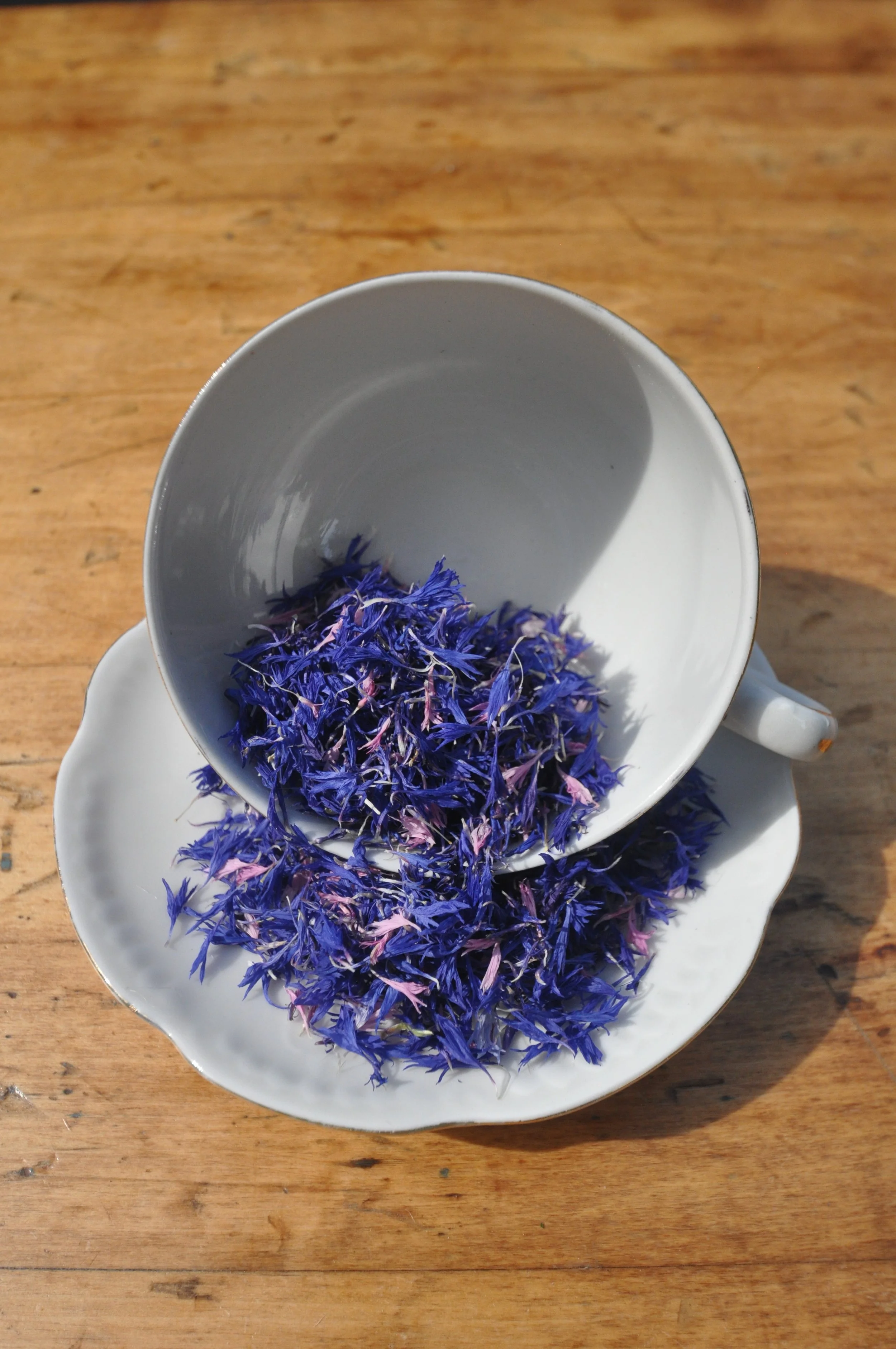Burdock (Root)
Burdock (Arctium lappa) is a biennial plant native to Europe and Asia, though it has naturalized widely across North America and Australia. Classified as part of the sunflower or aster family, Burdock is a biennial plant (meaning it has a two-year life cycle). It puts out basal leaves in the spring of its first year and develops a long carrot-like taproot. Burdock flowers its second year with pink-purple flowers on top of their burs with hooks that easily get caught in clothing, hair, and fur. As a result, burdock spreads rapidly and can be considered a noxious weed – so let’s eat it!
Burdock root is prized for its detoxifying and anti-inflammatory properties. It’s often used to support liver health, promote healthy skin, and aid digestion. Traditionally, it has also been used to treat ailments such as arthritis, sore throats, and colds. Rich in inulin—a prebiotic fiber—burdock root supports gut health and may help regulate blood sugar. The root is usually dried for teas and tinctures, but it can also be eaten raw or cooked. The flower stems are also edible and are similar in taste to artichokes once the bitter outer layers are removed.
When prepared as a tea, burdock root yields a warm, earthy brew with a slightly sweet, nutty flavor and a mild bitterness, similar to roasted dandelion root. This flavor profile also makes it an excellent caffeine-free coffee substitute. To use it in place of coffee, grind the roasted root and brew like coffee—using a French press, pour-over, or percolator. The resulting beverage has a robust, toasty flavor that’s comforting and energizing without the jitteriness of caffeine. For folks looking to cut down their coffee consumption (but not give it up entirely), we recommend a 3-to-1 ratio of coffee to burdock root.
-
Anise Hyssop
Dandelion Root
Nettle Leaf
-
Anti-inflammatory
Headache relief
Fever reducer
-
Steep 1-3 teaspoons roots in 8oz nearly boiling water for 3-10 minutes.
These statements have not been evaluated by the Food and Drug Administration. This product is not intended to diagnose, treat, cure, or prevent any disease. Consult your healthcare provider prior to use if you are pregnant, nursing, taking any medication, or have a medical condition.




Alehoof tea is a soothing, caffeine-free herbal infusion crafted from organic dried leaves of the alehoof plant. Known for its gentle, earthy flavor with subtle herbal undertones, alehoof has long been valued for its digestive and immune-supporting properties. Traditionally used to calm the digestive system and promote overall wellness, this tea offers a comforting ritual for daily self-care. Its mild taste and natural benefits make alehoof a wonderful addition to your herbal tea collection.